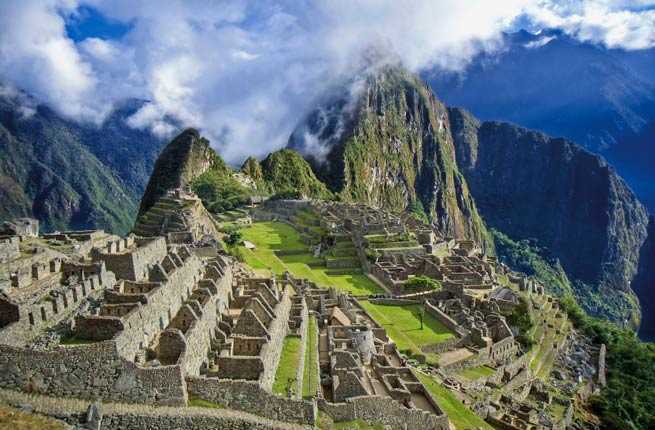
All over the globe, from Italy to Zimbabwe, civilizations have left behind impressive monuments and structures that attest to their former glory. Appearing in literature, songs, and films, these mystical sculptures, sacred religious sites, royal palaces, fortifications, ancient centers of commerce, ports, and tombs are all we have left of some of history's most illustrious societies. While some sites were lost for centuries, engulfed by overgrown jungles, others never fell out of use. Either way, these awe-inspiring places are sure to inspire travelers looking for adventure and a connection to the past.
by Laura Itzkowtiz

ROMAN FORUM
Rome
As the saying goes, all roads lead to Rome, and in the Ancient World, all roads led to the Roman Forum. Spread out in the valley between the Palatine and Capitoline Hills, the Roman Forum was the center of the Roman Empire from about 500 B.C. to 400 A.D. All aspects of public life took place here: triumphal processions, elections, public speeches, criminal trials, gladiatorial matches, and commercial affairs. Here, Marc Anthony delivered Julius Caesar's funeral oration and Augustus built the Temple to the Deified Caesar. In 2011, the Tempio di Vesta, where the vestal virgins lived, reopened to the public, granting visitors access to this sacred site.
Insider Tip: Take a guided tour to learn about the significance of the ruins and hear fascinating stories of Imperial Rome. Be sure to visit the Colosseum as well.
PLAN YOUR TRIP: Visit Fodor's Rome Guide
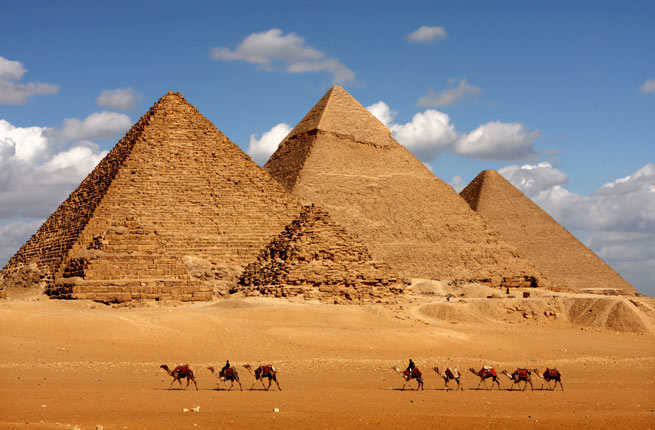
PYRAMIDS OF GIZA
Egypt
In the desert south of Cairo, three enormous pyramids testify to the legacy of the pharaohs of Ancient Egypt. The Pyramid of Khufu, commonly known as the Great Pyramid of Giza, is the largest of the three and the oldest of the Seven Wonders of the Ancient World (as well as the only one still in existence). Khafre and Menkaure (Khufu’s grandson) built the two smaller pyramids. The Great Sphinx stands guard at the entrance of the complex, which includes smaller pyramids belonging to female members of the dynasty and tombs for their relatives and courtiers.
Insider Tip: Access to the interior of the pyramids is on a rotating basis. Inquire at the ticket office; from there, you can take a tram to the site and explore on foot.
PLAN YOUR TRIP: Visit Fodor's Cairo Guide
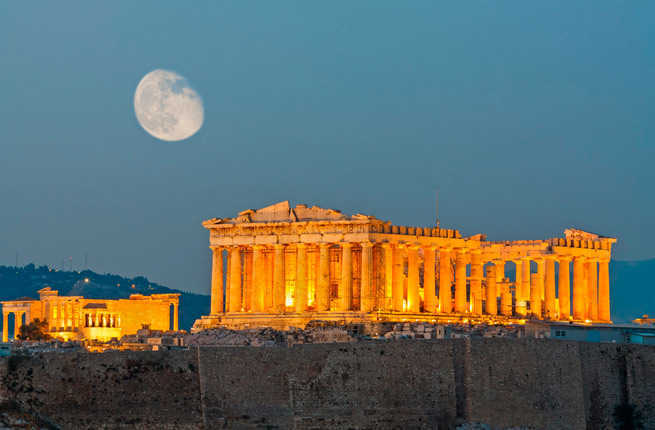
ACROPOLIS
Athens
Crowning the city of Athens, the Acropolis—“High City” in Greek—seems to reach up into the clouds. Built from 461–429 B.C., under the Athenian statesman Pericles, the site comprises the Parthenon, the Temple of Athena Nike, the Propylaea and the Erechtheion, which together recall the wealth, power, and sophistication of ancient Greece. Dedicated to Athena, the Parthenon is the most important surviving example of Classical Greece, but the Erechtheion, with the stunningly carved Porch of the Caryatids, is an equally incredible sight.
Insider Tip: Enter through the Beulé Gate (named for the French archeologist who discovered it in 1852) and make sure you have several hours to explore.
PLAN YOUR TRIP: Visit Fodor's Athens Guide

POMPEII
Italy
The eruption of Mount Vesuvius in 79 A.D. completely destroyed the town of Pompeii, burying it under molten lava and petrifying the site when it hardened. It takes some imagination to appreciate the site, which features the ruins of a meat and fish market, a bakery, the baths, Temple of Jupiter, the Basilica law courts, amphitheater, and several villas. Frescoes in the Villa dei Misteri (Villa of Mysteries) show a young bride's initiation into the cult of Bacchus. A mosaic in the Casa del Poeta Tragico (House of the Tragic Poet) shows a chained dog with the inscription cave canum (“Beware of the dog”).
Insider Tip: Nearby Herculaneum is also very well preserved. A 20€ ticket gives you access to Pompeii, Herculaneum, Stabia, Oplontis, and one other site for three days.
PLAN YOUR TRIP: Visit Fodor's Naples and Campania Guide
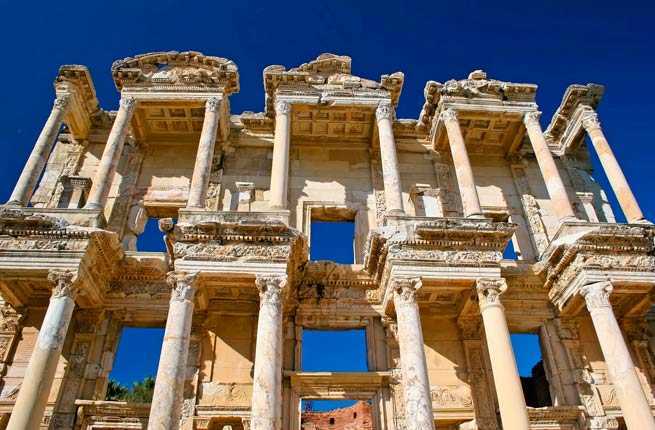
EPHESUS
Turkey
Located near present-day Selçuk in Izmir Province, Ephesus was once the most important Greco-Roman city in the Eastern Mediterranean and one of the best-preserved ancient sites in the world. The site tells the story of a powerful trading port and sacred settlement to the cult of Artemis. It was later conquered by the Romans and became an important Christian site, where the Third Ecumenical Council declared Mary the Mother of God. Ephesus was eventually conquered by the Byzantines and incorporated into the Ottoman Empire. Visitors today can see the Church of St. Mary, the Temple of Hadrian, Roman harbor baths, the Theater Gymnasium, amphitheater, and the incredible Library of Celsus.
Insider Tip: In the summer, it's best to go early or late in the day, when the sun is milder and the archeological site is less crowded.
PLAN YOUR TRIP: Visit Fodor's Central and Southern Aegean Coast Guide
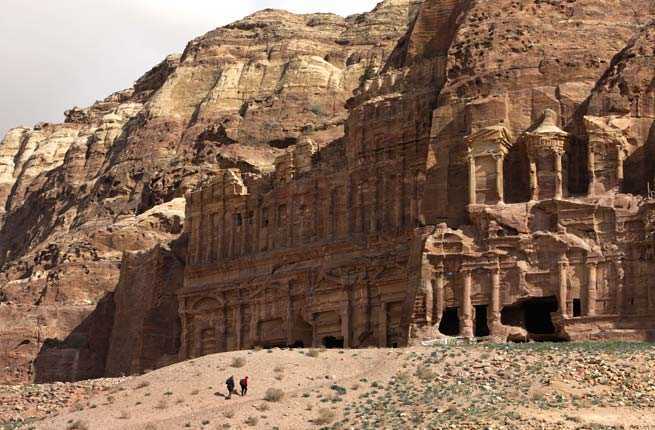
PETRA
Jordan
The ancient Nabataeans carved this incredible city into the sandstone cliffs between the Red Sea and the Dead Sea. Petra was lost until 1812, when Swiss explorer Johann Ludwig Burckhardt rediscovered it, and only 15 percent of the site has actually been unearthed. What we can see today includes 800 tombs, luxurious temples, churches, and the treasury—Petra's most famous monument. Enter the archeological site through the Siq, a narrow canyon you might recognize from Indiana Jones and the Last Crusade. Petra also made our list of the 15 Most Breathtaking World Heritage Sites.
Insider Tip: The Petra by Night candlelit walk is a magical way to immerse yourself in the city’s mysterious glory.
PLAN YOUR TRIP: Visit Fodor's Petra Guide

MACHU PICCHU
Peru
Yale University historian Hiram Bingham rediscovered the “Lost City of the Incas” in 1911, and the train from Cusco that snakes through the Urubamba Valley to Machu Picchu bears his name. Machu Picchu was not actually the most significant site of the Inca Civilization, but it is the most famous today because it was untouched during the Spanish conquest of South America. It was built in the 1400s as the estate of the Incan emperor Pachacuti. As you climb up to the summit, you'll be rewarded with breathtaking views of the entire complex. Take your time exploring and admiring the incredible stone structures up close.
Insider Tip: You won't find any signs explaining what purpose the various structures served. To get the full historical significance, it's best to go with a guide.
PLAN YOUR TRIP: Visit Fodor's Machu Picchu Guide

TEOTIHUACAN
Mexico
Located northeast of Mexico City, Teotihuacan is the site of the most remarkable pre-Columbian pyramids in Mesoamerica. The city is pre-Aztec, but the Aztecs—who believed that the gods created the world there—named it “City of the Gods.” The city is believed to have been constructed between 100 B.C. and 250 A.D., and at the height of its power, it had a population of perhaps as many as 200,000 people. It even had multi-family residential compounds—a precursor to the modern-day apartment building. The Avenue of the Dead cuts through the site, connecting the Pyramids of the Sun and the Moon. You can still admire the vibrant murals, which are astonishingly well-preserved.
Insider Tip: To see amazing artifacts from pre-Hispanic Mexico, be sure to visit the Museo Nacional de Antropología in Mexico City.
PLAN YOUR TRIP: Visit Fodor's Mexico City Guide
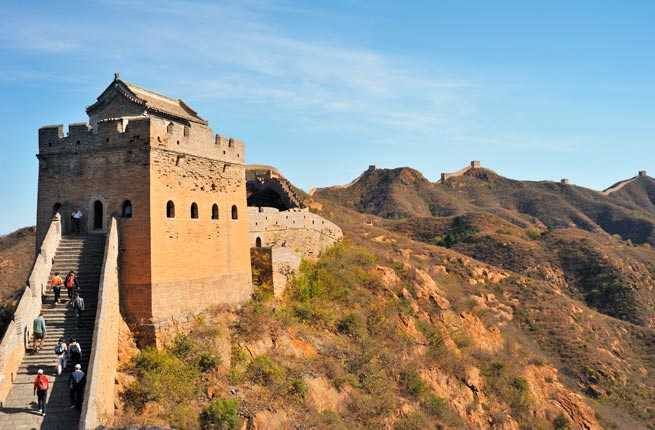
GREAT WALL OF CHINA
China
The Great Wall of China originated in 220 B.C., when China's first emperor Qin Shi Huang joined together fortifications built to protect northern China from invasions. The majority of the wall was built during the Ming Dynasty (1368-1644), when it became the world's largest military structure. It spans over 20,000 kilometers from Shanhaiguan in Hebei province in the east to Jiayuguan in Gansu province in the west. The Great Wall is the only man-made structure on earth that can be seen from the moon. Visitors can admire the watchtowers and ramparts that Chinese soldiers used as a vantage point centuries ago.
Insider Tip: The Badaling section of the Wall is easily accessible from Beijing, but it tends to be overrun by tourists. The Great Wall at Mutianyu is less crowded and offers spectacular views.
PLAN YOUR TRIP: Visit Fodor's Beijing Guide
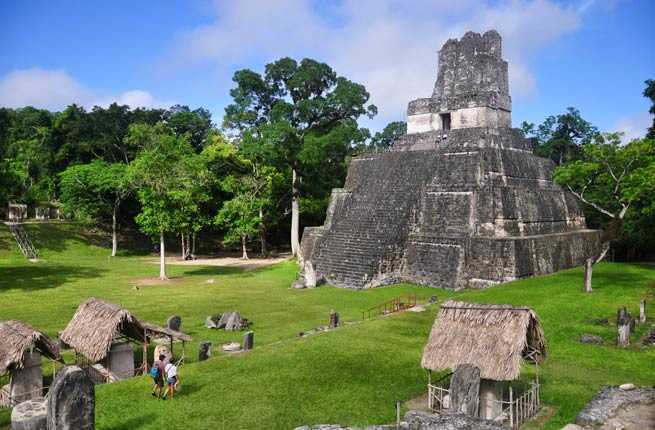
TIKAL
Guatemala
A jungle city built by the Mayans, Tikal reached the height of its power in the eight century before it was mysteriously abandoned around 900 A.D. It remained engulfed by the jungle for nearly 1,000 years, unnoticed by the Spanish conquistadors searching for gold. In the late 1800s, archeologists began to uncover the massive temples once covered in stucco and painted bright red and green to honor the Mayan gods. It's incredible to see the enormous temples that the Maya constructed without the use of metal tools, animals to carry heavy loads, or even wheels. Temple IV—the tallest—stands an impressive 230 feet high tall.
Insider Tip: Visitors to the archeological site can go camping on the grounds of the Tikal National Park or stay at a hotel nearby.
PLAN YOUR TRIP: Visit Fodor's Tikal Guide

ANGKOR WAT
Cambodia
The largest religious monument in the world, Angkor Wat is the best preserved and most impressive of the Khmer temples that make up the Angkor Temple Complex. In the 12th century, King Suryavarman II had it built at the capital of the Khmer Empire and dedicated it to the Hindu god Vishnu. Oriented toward the west, the temple's five conical towers are arranged to form a huge lotus bud. Bas-reliefs depicting the creation of the world, an audience given by the king, and epic battles from Hindu mythology are especially impressive.
Insider Tip: A passport photo is required for your entrance ticket and you’ll need to arrange transport within the enormous complex. Many travelers hire a car and driver or a tuk-tuk, but bicycles and electric bikes are available too.
PLAN YOUR TRIP: Visit Fodor's Cambodia Guide
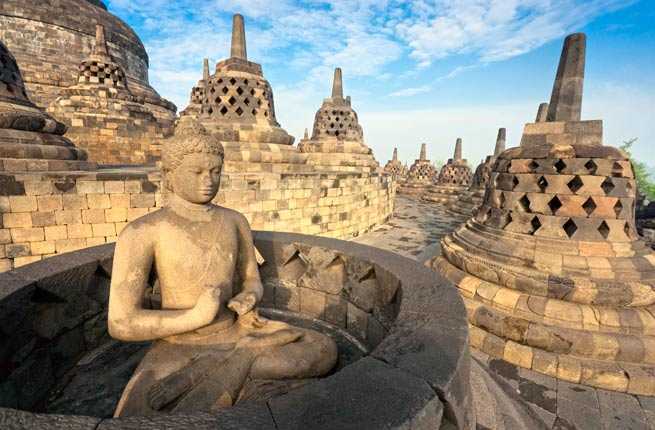
BOROBUDUR
Java, Indonesia
The incredible Borobudur temple rises up over Java, the largest island in Indonesia. It takes the form of a stepped pyramid, and each ascending level represents a stage of enlightenment. Toward the bottom, intricately carved bas-reliefs depict the Buddhist sutras. The higher terraces feature statues of Buddha inside bell shaped stupas. Built between 750 and 842 A.D. by the Sailendra Dynasty, Borobudur represents the melding of Indian art forms and traditional Indonesian terraced sanctuaries, as well as the interplay of Hinduism and Buddhism.
Insider Tip: If you can get up early enough, sunrise is the most serene and magical time of day to visit Borobudur.
PLAN YOUR TRIP: Visit Fodor's Indonesia Guide

STONEHENGE
England
How Stonehenge came to be is one of the world's great mysteries. We know that it was begun around 3000 B.C. and used until 1600 B.C., probably as a religious site where worship revolved around the cycle of the sun. Archeological excavations have revealed that it was once a burying ground. The mystery lies in how the sarsen stones, weighing as much as 45 tons, were transported across great distances before the invention of the wheel. The incredible prehistoric monument is especially moving at sunrise and sunset, when you can feel its mystical presence.
Insider Tip: A new visitor center recently opened and displays over 250 artifacts, including the reconstructed face of an early Neolithic man.
PLAN YOUR TRIP: Visit Fodor's England Guide
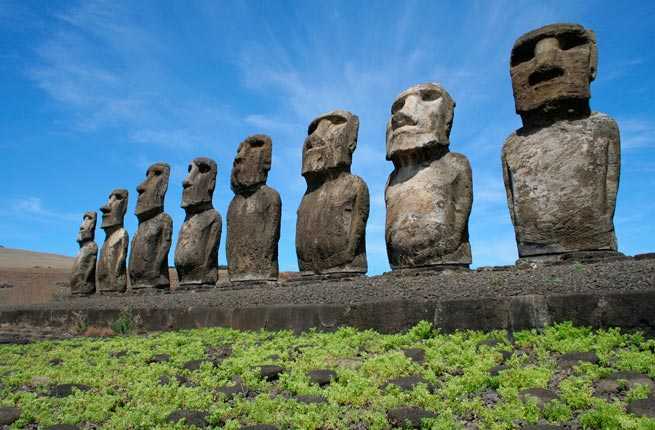
MOAI STATUES
Easter Island, Chile
Like Stonehenge, the monolithic human figures carved by the Rapa Nui people—the native Polynesian inhabitants of Easter Island—puzzle archeologists. Most of the Moai statues were carved at the Rano Raraku quarry on the east of the island, but it's unclear how they were transported and placed atop the stone platform (known as an ahu) where they have stood for centuries. They were placed atop family burial grounds, transmitting their mana—power—to the living family chief. No one is sure how or why they were toppled either, but they stand tall today thanks to 20th-century archeologists.
Insider Tip: If you ask native Easter Islanders how the Moais got to their present home, they will likely tell you that they “walked.”
PLAN YOUR TRIP: Visit Fodor's Easter Island Guide
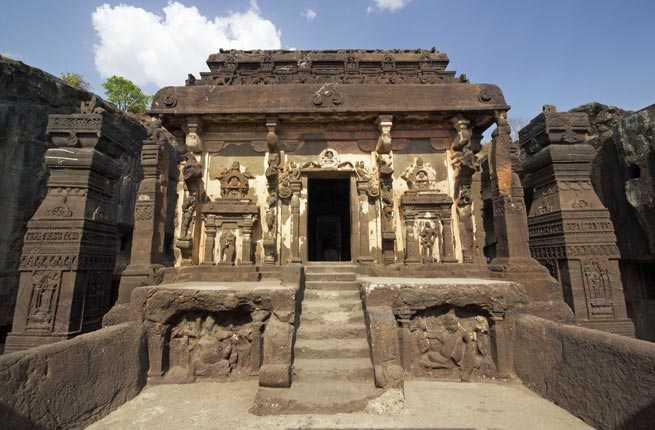
ELLORA CAVES
Aurangabad, India
Dug into the sides of a high cliff in Maharashtra, the Ellora Caves attest to the peaceful coexistence of Buddhism, Hinduism, and Jainism in ancient India. The archeological site comprises 34 monasteries and temples dating back to the seventh century. These massive, ornate caves are incredible works requiring immense sculptural skill—even the ceilings were carved out of the cliff rather than placed on top of the walls. But the most impressive aspects of the Ellora Caves are the ornate friezes and sculptures depicting serene Buddhas and powerful Hindu gods battling each other. The Jain caves are at the far end of the complex, but are worth seeing as well.
Insider Tip: Also check out the Ajanta Caves, which are farther from Aurangabad and less frequented than the Ellora Caves. Unlike Ellora, the Ajanta Caves are uniquely Buddhist.
PLAN YOUR TRIP: Visit Fodor's Mumbai Guide
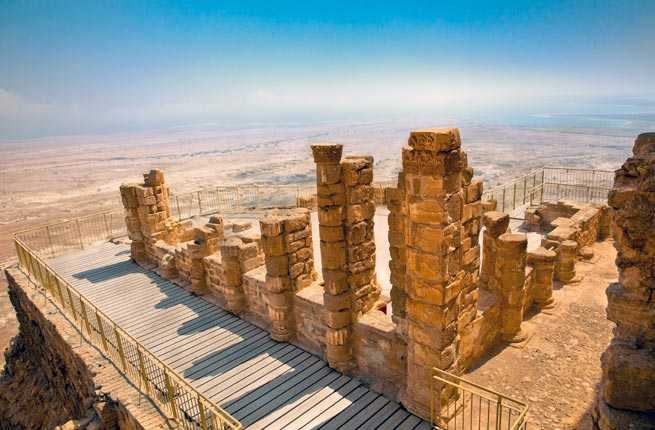
MASADA
Israel
The ancient fortification of Masada in the Judean desert may look like a dry, dusty plateau, but it was once the palace of Herod the Great and the site of the Jewish rebellion against the first Roman invasion. Thanks to advanced systems of channeling and conserving water, the palace complex was once a lush royal retreat. Today, you can see the remains of the bathhouse, two mikvahs (Jewish ritual baths), the synagogue, the Northern Palace, the Western Palace, and the Roman siege works—the most complete example left over from the Roman Empire. Be sure to visit the Masada Museum near the lower cable car entrance to see artifacts from the archeological excavations.
Insider Tip: Most visitors take the cable cars to reach the top of the plateau overlooking the Dead Sea. Alternatively, you can hike to the top in about 45 minutes.
PLAN YOUR TRIP: Visit Fodor's Jerusalem and the Dead Sea Guide
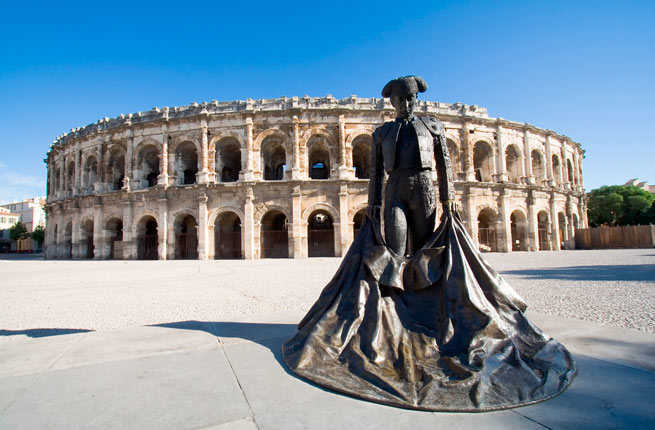
ARÈNE DE NIMES
Nîmes, France
It's easy to forget that the Roman Empire extended into present-day France (then known as Gaul), but the best preserved Roman amphitheater is actually found in Nîmes. A replica of the Colosseum, the Arène de Nîmes was used for gladiator fights, public executions and other bloody displays of Roman might. Incredibly, the arena is still used today for concerts, bullfights, ceremonies, and firework displays. Visitors can tour the arena with its carvings of Romulus and Remus and bulls' heads on the exterior, though seeing a concert there is an unforgettable experience.
Insider Tip: Nearby, La Maison Carrée is a superbly preserved antique temple modeled on the Temple of Apollo in Rome. You can get a single ticket to visit the Arènes, the Maison Carrée, and the Augustinian Tour Mange.
PLAN YOUR TRIP: Visit Fodor's Provence Guide
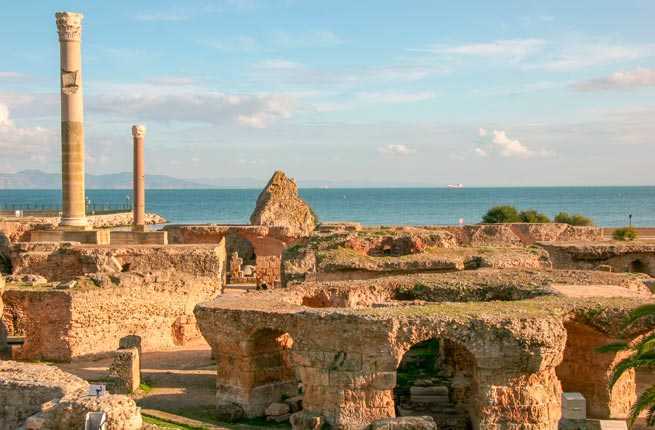
CARTHAGE
Tunisia
As told in Virgil's Aeneid, Queen Dido founded Carthage c. 814 B.C., and the city came to be the center of the Phoenician empire before the Romans conquered it in 146 A.D. At its height, Carthage was a prosperous port on the Gulf of Tunis and the capital of the province of Africa. The Romans later rebuilt the city they destroyed during the Punic Wars. In subsequent centuries it hosted the Vandals, Christians, and Arabs. Today, visitors can see the Punic ports, Antonine baths, necropolises, theater, amphitheater, circus, basilicas, and residential areas.
Insider Tip: You can get to Carthage on the TGM light rail line from Tunis. It's easy to explore the town on foot once you arrive.
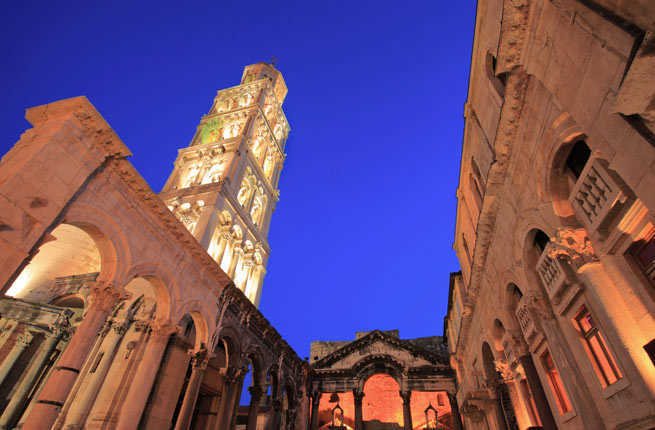
DIOCLETIAN’S PALACE
Split, Croatia
In the late third and early fourth centuries A.D., Roman Emperor Diocletian built a spectacular palace near his birthplace in Dalmatia to live out his remaining years in failing health. His luxurious villa on the Adriatic combined elements of Roman and Greek architecture with a Roman garrison. The four walls surrounding the complex each had a gate: the Golden Gate opening onto the Roman settlement to the north, the Silver Gate to the east, the Iron Gate to the west, and the Bronze Gate opening onto the sea to the south.
Insider Tip: Diocletian's mausoleum lies in the Cathedral of St. Domnius, dedicated to St. Mary, on the eastern part of the Peristyle.
PLAN YOUR TRIP: Visit Fodor's Croatia Guide

GREAT ZIMBABWE
Masvingo, Zimbabwe
Legend has it that the Queen of Sheba once ruled at Great Zimbabwe, a UNESCO World Heritage Site about 30 kilometers from Masvingo. The ruins bear witness to the Bantu civilization of the Shona people in the Middle Ages. Great Zimbabwe was founded in the 11th century and by the 14th century had become the capital of a major state in the gold-rich plateau. The site was abandoned around 1450 due to deforestation and a lack of food. Archeological excavations have uncovered glass beads and porcelain from China and Persia, as well as gold and Arab coins, showing evidence of trade with the wider world.
Insider Tip: Be sure to see the acropolis on the Hill Ruins—the royal city where African chiefs reigned.
PLAN YOUR TRIP: Visit Fodor's Zimbabwe Guide



